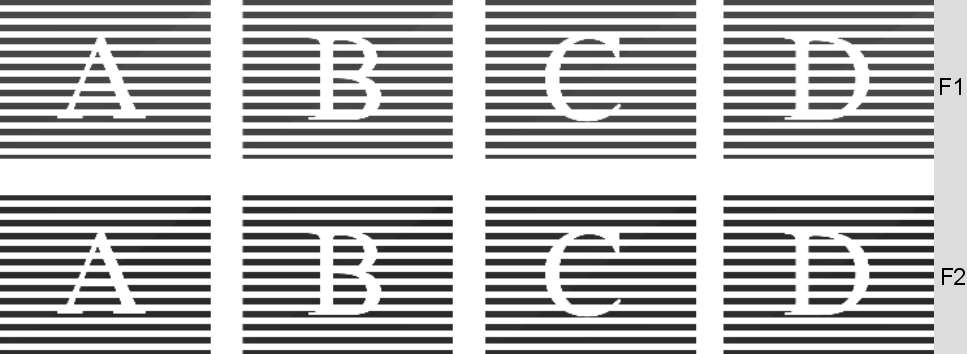Pulldown is a synchronisation technique that is used to approximate compatibility between two dissimilar formats (usually between film to video), by creating new frames.
Pulldown is added when 24 fps film material is transferred to 60i or 50i tapes using the telecine method. The same images that made up 24 frames of film must now make up 30 (60i, or NTSC) or 25 (50i, or PAL) frames of video. In other words, for every 24 film frames, frames must be added, the number of which depends on the video format:
To accomplish this conversion, the film frames are first divided into fields. The fields are then distributed across frames in a regular pattern to create the frames with the smoothest results and least disturbance of the original material.
When transferring to the NTSC format, a pulldown frame is created every four film frames. How the pulldown frame is created varies according to the type of pulldown used:
Example of a 2:3 and 3:2 pulldown transfer process:















In the case of PAL pulldown, the full 24 film frames are used to create a sequence of 25 video frames: the 12th and 24th film frames are used in 3 fields of video.
AA BB CC DD EE FF GG HH II JJ KK LL MM NN OO PP QQ RR SS TT UU VV WW XX
AA BB CC DD EE FF GG HH II JJ KK LL LM MN NO OP PQ QR RS ST TU UV VW WX XX
Regardless of the pulldown used, the approach is similar: the converted video consists of sequences of intact film frames separated by hybrid frames.
While the intact frames are identical to their sources, the hybrids consist of fields from two different film frames. If viewed as stills, the hybrid frames appear jittery—because the fields do not originate from the same moment in time. (When played back in the full sequence, the jitter is imperceptible.) When working with 24p sources in Flint, it is important to keep in mind the jitter frames. They are the markers for setting up the automatic pulldown removal on capture.